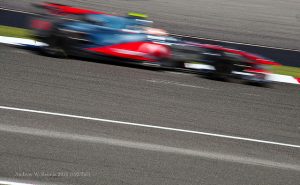 Imagine you are the race director for a Formula One car. Decisions must be made within seconds, sometimes in the blink of an eye.
Imagine you are the race director for a Formula One car. Decisions must be made within seconds, sometimes in the blink of an eye.
When speed is of utmost importance, it is necessary for race engineers to have all relevant race data at their fingertips. Instead of having a couple of smart guys making engineering decisions with gut feeling and instinct, analytics make it possible to use the more than 200 sensors that are embedded in an average Formula One car. Data from these sensors can help create real time alerts on brakes, fuel, tires, track condition, driver condition, max speed, and more. Plus, after the race, you can analyze all relevant data regarding the car’s performance in light of weather conditions, engine temperature, specific batches of tires used and so on.
With all these internal and external data points, you might think of this as a big data problem. During the race, however, it is less about big data and more about fast data. Since the cars aren’t generating petabytes of data during the race, the ability to compare data streams during the race in real-time with data from prior races or seasons becomes most important. Engineers can use event stream analytics to ask – and answer:
- What tactics did the competition use in the past?
- How was the tire strategy?
- What parts failed and what influencing factors lead to failure?
- How long were the rain showers in Singapure during the month of september on average?
All these question need to be answered in seconds so the race crew can make fac- based decisions in near real time depending on the current race situation.
Back in the day, Nicki Lauda or Michael Schuhmacher were the most skilled drivers who understood instinctively how to fine tune a car to their advantage. You could say that today this role has been taken over by the analysts. Nowadays, the race analysts are even part of aerodynamic groups and the manufacturing engineers teams.
In this Fast Company article, Mclaren Executive Chairman Ron Dennis explains how and why Formula One teams like Mclaren have turned to high-speed data analytics to create a competitive advantage.
Imagine the benefits if, Formula One teams used in-memory database HANA combined with SAS high-performance analytics to create a best in class approach fast AND big data analytics. The role of real-time analytics in this could bring additional benefits, like preventing car parts from failure, predicting competitors’ strategies, predicting the right time for pit stops, and much more.
Advanced analytics could also be used tomore quickly analyze test drive data from Friday, in order to make the right decisions for qualifying on Saturday, and again create fast insights from Saturdays qualifying until the race on Sunday.
In many ways, Formula One is a great sandbox for fast data and big data, as well as predictive analytics technologies. The industry offers clear rules and targets in a closed loop environment, which allows you to use predictive analytics to generate the best results possible.
Next, I hope to seethe future of fast data analytics supporting the connected car technologies in the way that you and I can participate, by giving consumers a greater driving experience than ever before also.
Learn more about analyzing sensor data in this introductory article about The Internet of Things.
photo by Ben Sutherland // licensed by creative commons
